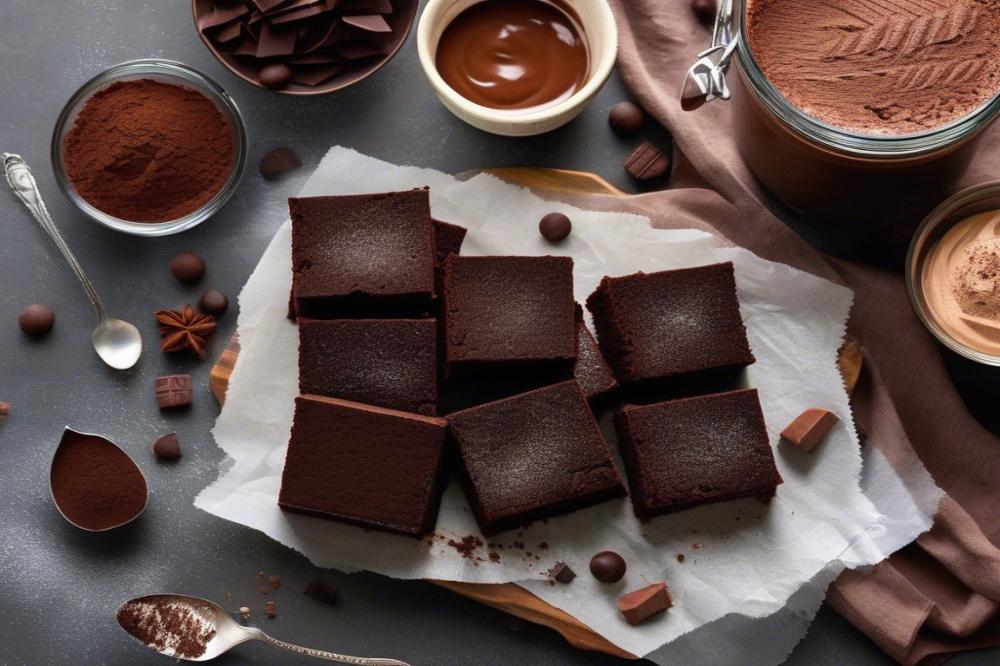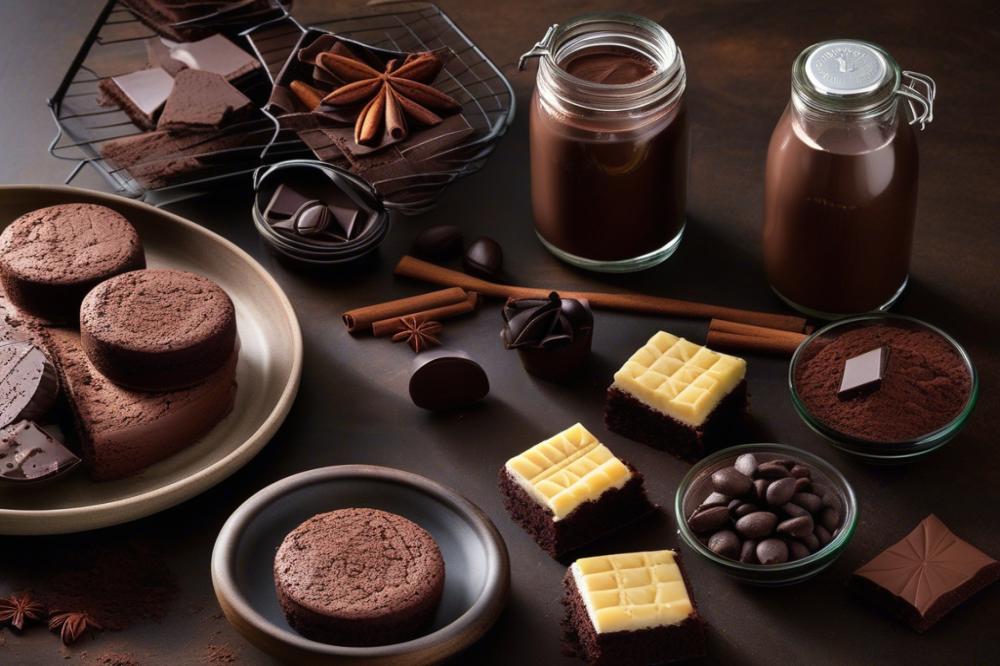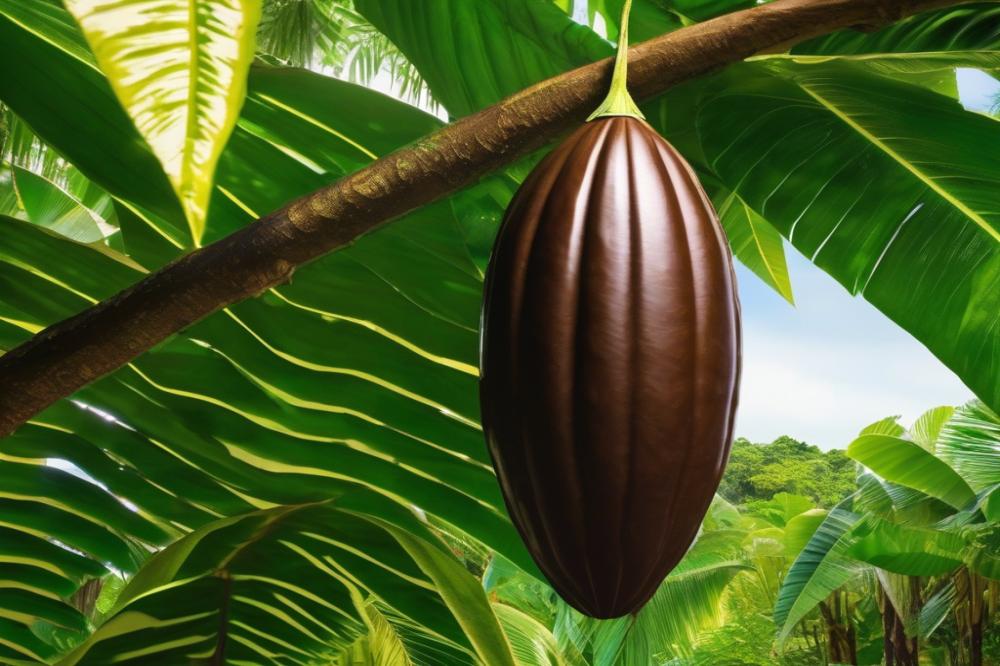Introduction
Cocoa plays a crucial role in baking, especially when it comes to creating decadent chocolatebix.com/the-role-of-cocoa-in-sustainable-agriculture”>chocolate desserts. This rich ingredient not only adds flavor but also brings out the best in your treats. Many passionate bakers know that the right type of cocoa can enhance any dessert recipe, making it memorable.
Cocoa powder and baking chocolate are the two main forms you’ll encounter in the kitchen. Both have their place in baking techniques. While cocoa powder is often used for lighter and airier baked goods, baking chocolate provides a deeper, richer cocoa flavor. Choosing the right form can elevate your treats from ordinary to extraordinary.
Measuring cocoa accurately is essential. A precise amount can significantly impact the final taste and texture of your dessert. To make your baking experience even better, consider some Baking tips, such as how to store cocoa and recognizing cocoa substitutes if you ever run out.
Many dessert recipes require a delicate balance of flavors, and cocoa is often the star. Experimenting with different types can yield exciting results. Learning how to enhance chocolate flavor in your goodies can also impress your friends and family.
Through this article, we aim to guide you on the path to mastering Cocoa for baking. Whether you’re a beginner or an experienced baker, these insights will help you craft perfect desserts every time.
Understanding Cocoa and Chocolate

To create delicious chocolate desserts, it’s essential to know the differences between cocoa powder and baking chocolate. Cocoa powder is made from ground cocoa beans, while baking chocolate is solid chocolate that contains both cocoa solids and cocoa butter. Cocoa powder provides a strong cocoa flavor, while baking chocolate adds richness and a smoother texture. Each plays a different role in dessert recipes.
Types of Cocoa Powder
Cocoa powder isn’t just one type. There are two main varieties: natural cocoa powder and Dutch-processed cocoa powder. Natural cocoa powder is slightly acidic, which can brighten flavors and add depth to your chocolate desserts. It works well with baking soda in recipes. Dutch-processed cocoa, on the other hand, has been treated with an alkali to neutralize its acidity. This results in a darker color and a milder taste. Many bakers prefer Dutch-processed for its smoother flavor.
The Impact of Cocoa Types on Flavor and Texture
Using different types of cocoa can greatly affect both flavor and texture in your dessert recipes. Natural cocoa tends to have a more pronounced and sharper cocoa flavor, which can be perfect for recipes that need a kick. Meanwhile, Dutch-processed cocoa offers a rich, darker taste, enhancing chocolate flavor in specific desserts. Understanding how each type works allows you to make better choices for your baking techniques.
In addition, measuring cocoa accurately is crucial. Too much can overwhelm the sweetness, while too little may lead to bland results. If you need cocoa substitutes, know that they can vary in intensity. Always adjust your other ingredients to balance tastes properly.
As you experiment with these tips for baking, you’ll discover how different cocoa products can transform ordinary recipes into extraordinary treats. Enjoy the process and make note of what works best in your kitchen!
Measuring and Using Cocoa in Baking

Measuring cocoa accurately is crucial for the best results in your baking. A common mistake is scooping cocoa directly from the container. This can lead to packing and an incorrect amount. Instead, use a spoon to fluff the cocoa powder before lightly spooning it into your measuring cup. Level it off with a straight edge for precision. Doing this will prevent you from using too much cocoa, which can alter the taste of your chocolate desserts.
Incorporating Cocoa into Recipes
When it comes to incorporating cocoa into recipes, timing is everything. Add cocoa powder to your dry ingredients, like flour and baking soda. This allows it to blend more evenly throughout the batter or dough. When using baking chocolate, melt it first for a smooth texture. Stir it in at the right moment, often after creaming butter and sugar, to achieve a rich cocoa flavor. Mixing carefully helps you avoid clumps and results in a better final product.
Balancing Cocoa with Other Ingredients
Balancing cocoa with other ingredients is essential for enhancing chocolate flavor. If a dessert feels too bitter, you might not have added enough sugar. On the flip side, if it’s too sweet, consider using cocoa substitutes to introduce a deeper flavor without overpowering the taste. Vanilla extract can also round out the flavors. A touch of espresso powder can intensify the chocolate notes, making your desserts even more delightful. Remember, with baking techniques, small adjustments can have a big impact on your dessert recipes.
Cocoa Substitutes and Alternatives

When your recipe calls for cocoa powder or baking chocolate, you might not always have them on hand. Thankfully, there are several common substitutes you can use. Unsweetened chocolate and cocoa powder work well, but some prefer alternatives like carob powder or Dutch-processed cocoa. Each option gives a slightly different taste and texture, so it’s best to choose wisely.
Adjusting recipes requires some understanding. When using cocoa substitutes, you must consider their different sweetness levels and fat content. For example, if you’re replacing cocoa powder with unsweetened chocolate, use one ounce of that chocolate for every three tablespoons of cocoa powder. This exchange will help maintain the right balance in your dessert recipes. It’s also important to reduce the fat in your recipe because baking chocolate has more fat than cocoa powder.
The flavor and texture of chocolate desserts can change with various substitutes. Cocoa powder provides a strong cocoa flavor, while carob will add a milder sweetness. Experimentation might be necessary. You may find that you prefer a mix of substitutes to enhance chocolate flavor further in your treats. Baking techniques may also require tweaking, especially when it comes to drying times and temperatures. Don’t forget to taste as you go! This approach helps achieve delightful and balanced cocoa flavors.
Measuring cocoa accurately becomes crucial for any dessert. A dry measure for cocoa powder may differ from how you would measure melted baking chocolate. Keep that in mind to ensure consistent results. Remember to check the texture too. You want your dessert to have the right moistness without being too dense or dry.
Tips for Perfect Chocolate Desserts
First, explore baking techniques that can significantly enhance cocoa flavor. One effective method is to bloom the cocoa powder. This involves mixing it with hot water or hot milk before adding it to your recipe. Doing this helps unlock deeper flavors and aromas in your chocolate desserts. Additionally, consider using a mixture of cocoa powder and baking chocolate. The combination often leads to a richer chocolate taste.
The importance of freshness and quality in cocoa products cannot be overstated. Old or stale cocoa can dull flavors and ruin dessert recipes. Always check the expiration date on cocoa products. The best results come from using high-quality cocoa powder and fine baking chocolate. When possible, opt for natural cocoa powder instead of Dutch-processed if you want a more intense chocolate flavor.
Creative ways to incorporate cocoa into various dessert recipes will inspire any home baker. One idea is adding cocoa to pancake batter or waffles for a chocolate twist at breakfast. You can stir some into your morning smoothies for additional richness. Even savory dishes benefit from a hint of cocoa; try adding it to chili or barbecue sauce for depth. Don’t forget about cocoa substitutes too. Carob powder is a great alternative, and it offers its own unique flavor.
Baking is all about experimenting. Each recipe presents an opportunity to create something new. Remember to measure cocoa accurately for best results. Too little can leave desserts tasting flat, while too much can overpower other flavors. Finally, don’t shy away from trying different types of cocoa, such as dark or milk, depending on your preference. The versatility of cocoa can lead to delightful surprises.
Final Thoughts on Cocoa in Baking
Recapping the essential tips for using cocoa powder in your baking journey, remember to always choose quality chocolate to improve your desserts. Balancing cocoa with sugar is crucial too; this will help you achieve just the right flavor. Don’t forget about sifting cocoa for a smoother texture in your batter. That small step can make a big difference. Also, adjusting the amount of cocoa to match your desired taste can lead to delightful outcomes.
Experimentation is key when incorporating cocoa into dessert recipes. Whether you’re trying a new brownie recipe or a rich chocolate cake, there’s much to discover. Different brands of cocoa can yield distinct flavors, so don’t hesitate to try them all. Mix it up by adding cocoa to unexpected places, like smoothies or icing. Embrace the chance to create your own unique treats, and let your creativity shine through.
Enhancing chocolate desserts can be as easy as understanding how cocoa interacts with other ingredients. A little bit of cocoa can deepen flavors while too much might overwhelm. The balance you find will define your signature desserts. Enjoy the process and share your creations with friends and family. By following these tips, your baking adventures can lead to decadent delights that everyone will love.



